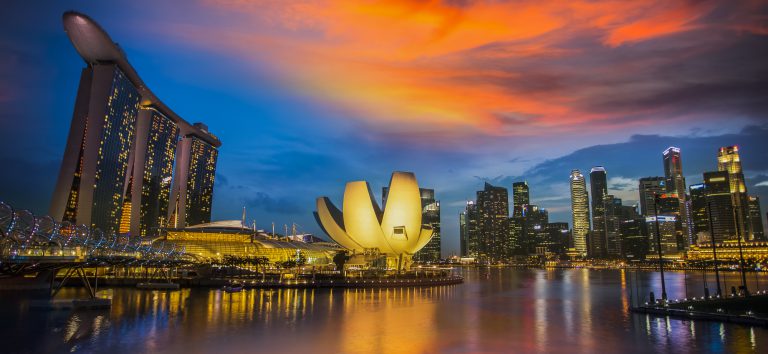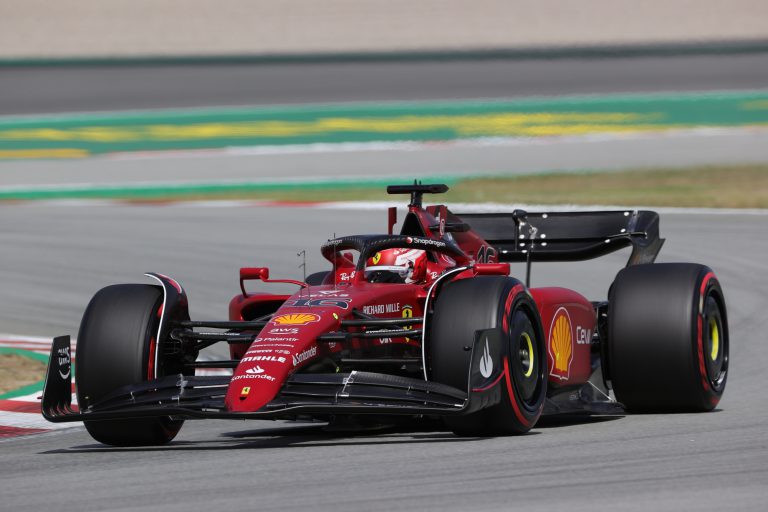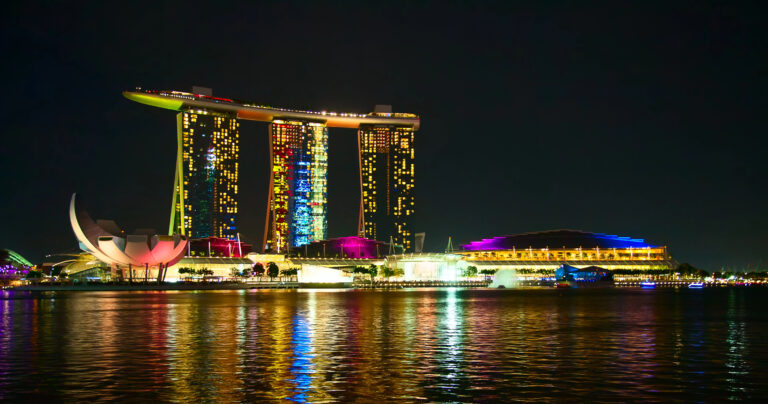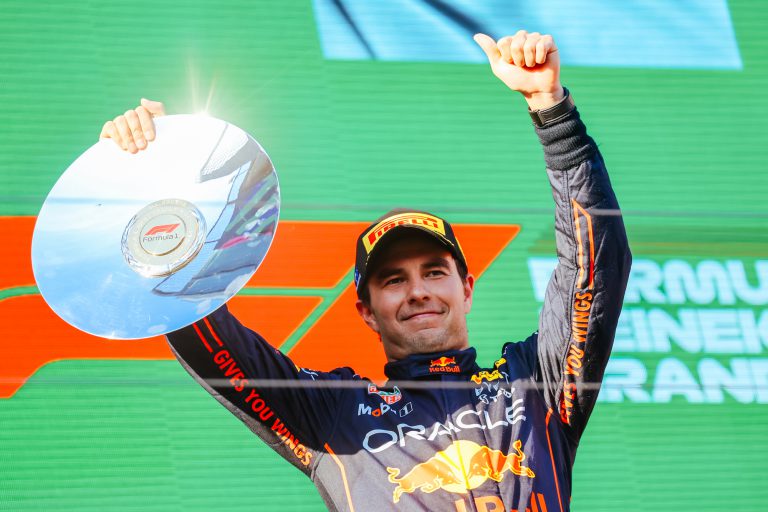Singapore’s Formula 1 History of Race Tracks, Teams, and Drivers
TABLE OF CONTENTS
The Singapore Grand Prix is one of those races where you can’t help wondering how the drivers manage to complete the race. The Singapore GP is one of the toughest races for cars to handle but is also tough on the bodies of F1 drivers. Drivers can lose up to 3kg(6.6lbs) in a single race.
The race itself takes place at the Marina Bay Circuit, which snakes its way through the downtown circuit. You can expect to see sparks flying during this night race not only because the cars are grazing the racing track but also because there is nearly a one hundred percent guarantee that there will be a crash and a safety car making the rounds.
It is the only race where a safety car has made an appearance every race. The Singapore GP is visually stunning and always provides intense action to keep fans on the edges of their seats.
Here is the history of Singapore and Formula 1.
TRACKS
Singapore before 2008 never hosted a Formula 1 race but way back in the sixties the country did host Formula Libre and the Australian Formula 2 series. In the early sixties, the race was called Malaysian Grand Prix until its name was changed to the familiar Singapore Grand Prix after the country gained independence from Malaysia in 1965.
QUICK JUMPS
THOMSON ROAD GRAND PRIX CIRCUIT
BEFORE F1
SINGAPORE’S FIRST STREET CIRCUIT
The Thomson Road Circuit was much like the Marina Bay Circuit and was a street circuit that drove through the Old Upper Thomson Road. The track had a length of 4.865km that featured nine turns running clockwise and needed fifty laps to complete the race. The fastest lap was set in 1973 by Australia’s Leo Geoghegan driving for team Birrana with a time of 1:54.9. This edition of the Singapore Grand Prix only lasted from 1961 to 1973 and was halted from proceeding due to safety concerns.
DEADLY TRACK
Although there were only nine turns, it is a bad sign when three of those turns and a straight away earn dubious nicknames. Names such as the “circus hairpin”, “the snakes”, “devils bend” and “murder mile”.
With names like that, it is no surprise there have been numerous crashes and sadly even death. Seven drivers lost their lives driving on that insane track where on occasion one driver lost his life falling into a ravine while another died wrapping his car around a cable pole.
Drivers must have exhaled with relief knowing this track would no longer be scheduled, which would improve their chances to live a little longer in the dangerous world of motorsport.
MARINA BAY CIRCUIT
In 2008, the Singapore GP made its first appearance in Formula 1, introducing the Marina Bay Circuit to the calendar. Marina Bay Circuit continued the tradition of having a street circuit for a track but unlike Thomson Road from past decades, Marina Bay drove the heart of downtown Singapore and Kallang near their respective harbors.
Marina Bay is notoriously difficult to drive and pushes F1 teams and drivers to their limits. The track was designed by German Herman Tilke, who has designed and reimagined numerous F1 circuits. Over ninety thousand fans can watch the race and over the weekend the total attendance can hit upwards to three hundred thousand fans.
A NIGHTTIME AFFAIR
Marina Bay was the first F1 race to take place at night, which made it a unique experience for fans to watch their favorite liveries shine under the bright lights of Singapore. The race cost including the track construction costs one hundred and fifty million dollars which were mostly supplied by the Government using taxpayer’s money to fund the project.
INSIDE THE NUMBERS
The circuit’s length is 5.063km which challenges drivers with twenty-three turns to run over sixty-one laps to achieve the race distance of 308.706km. The track includes two short DRS zones where drivers can easily surpass three hundred km/h down those stretches. In between turns 18 and 19 fans in the grandstand will feel the rumble of the cars running up their spines as the F1 cars travel beneath their feet.
GOING THROUGH SOME CHANGES
Although Marina Bay is pleasant for fans to watch, drivers, on the other hand, have not always enjoyed the circuit which has led the track to have four slightly different variations over its lifetime. The track length has not changed much, and the number of turns has stayed the same at twenty-three in all four variations.
Changes were made by removing a chicane in turn ten which used to be referred to as the Singapore Sling in 2013 and making slight variations on other turns making them safer or widening them to increase passing opportunities.
Marina Bay was also notorious for having turtle-like curbs that had drivers worried that hitting them would put an end to their race day, subsequently, they too were modified.
A CHALLENGING DRIVE
It is clear that Marina Bay is one of the most if not the most difficult tracks on the Formula 1 schedule and only Monaco or Baku can rival it. Drivers don’t only need to contend with the bumpy twisting track, they must also deal with extremely humid Singaporean temperatures.
The race is scheduled to avoid the Monsoon downpours, so rain is a rarity for this GP. Nonetheless, drivers are left soaked by the end of the race due to the high humidity and heat even if the sun has set.
Drivers can lose a great deal of weight and have to deal with dehydration by the end of their races. Finishing the race in one piece is an accomplishment and winning it takes courage and endurance.
NOT WITHOUT CONTROVERSY
The first winner at Marina Bay was Fernando Alonso driving for Renault and a year later it was learned his teammate crashed on purpose in order to trigger a safety car released onto the track. The fastest laps on all the variations are tabled below.
FASTEST LAPS
| VARIATION | TIME | DRIVER-COUNTRY | TEAM | YEAR |
| 2008-2012 | 1:45.599 | KIMI RÄIKKÖNEN- FINLAND | FERRARI | 2008 |
| 2013-2014 | 1:48.574 | SEBASTIEN VETTEL- GERMANY | RED BULL | 2013 |
| 2015-2017 | 1:45.008 | LEWIS HAMILTON-BRITAIN | MERCEDES | 2017 |
| 2018- | 1:41.905 | KEVIN MAGNUSSEN-DENMARK | HAAS | 2018 |
In twelve Singaporean GPs only four drivers can currently claim to have won the race alongside four different constructors. Sebastien Vettel has been the most successful driver on the circuit, winning five times and Mercedes is the best team on the track, winning four times.
The 2019 and 2020 races were canceled due to pandemic measures and the Singapore GP is set to return to F1 in 2022.
TEAMS
Singapore has yet to produce its first Formula 1 team in F1’s history. There are currently no potential teams inquiring about entering into the fray anytime soon. Perhaps at the least, we will have companies as sponsors in F1 rather than creating and managing a team for themselves.
DRIVERS
Formula 1 is extremely popular in Singapore and the wait for their first Singaporean driver in F1 continues. There has only been one driver to even be remotely considered of making into F1, which was Andrew Tang. Here is a quick bio of Singapore’s only hope to join F1 so far.
ANDREW TANG
Andrew Tang who was born on November 13th in 1994 in Singapore was the country’s first race car driver to get Formula 1’s attention. Tang began turning heads as a young eight-year-old in karting, winning numerous races and a championship which encouraged his family to support him in his racing dreams.
F1 TAKES A SNIFF
McLaren took notice of the young sixteen-year-old and enrolled him into McLaren’s Young Driver Programme in 2012. Tang pleased his potential F1 suitors two years later in 2014 winning the 2014 Toyota Racing Series in New Zealand, it was the first time a foreigner had won that title.
DUTY CALLS
Unfortunately for Tang, his racing ambitions came to a halt when Singapore required him to enter the National Service (military). McLaren removed Tang from their Youth Programme leaving him without much hope of ever making it to F1.
Upon completion of his country duties, he returned to racing when Porsche entered him into their driver development program extending his racing career a little longer. In 2017 he finished third for the driver’s title in the China GT Championship.
Outside of karting, Tang won five races and had twenty-three podium finishes which were clearly not enough for Formula 1 to take heed. Andrew Tang was and is the only Singaporean driver to even take a sniff at the big leagues but unfortunately, duty had to take precedence.







